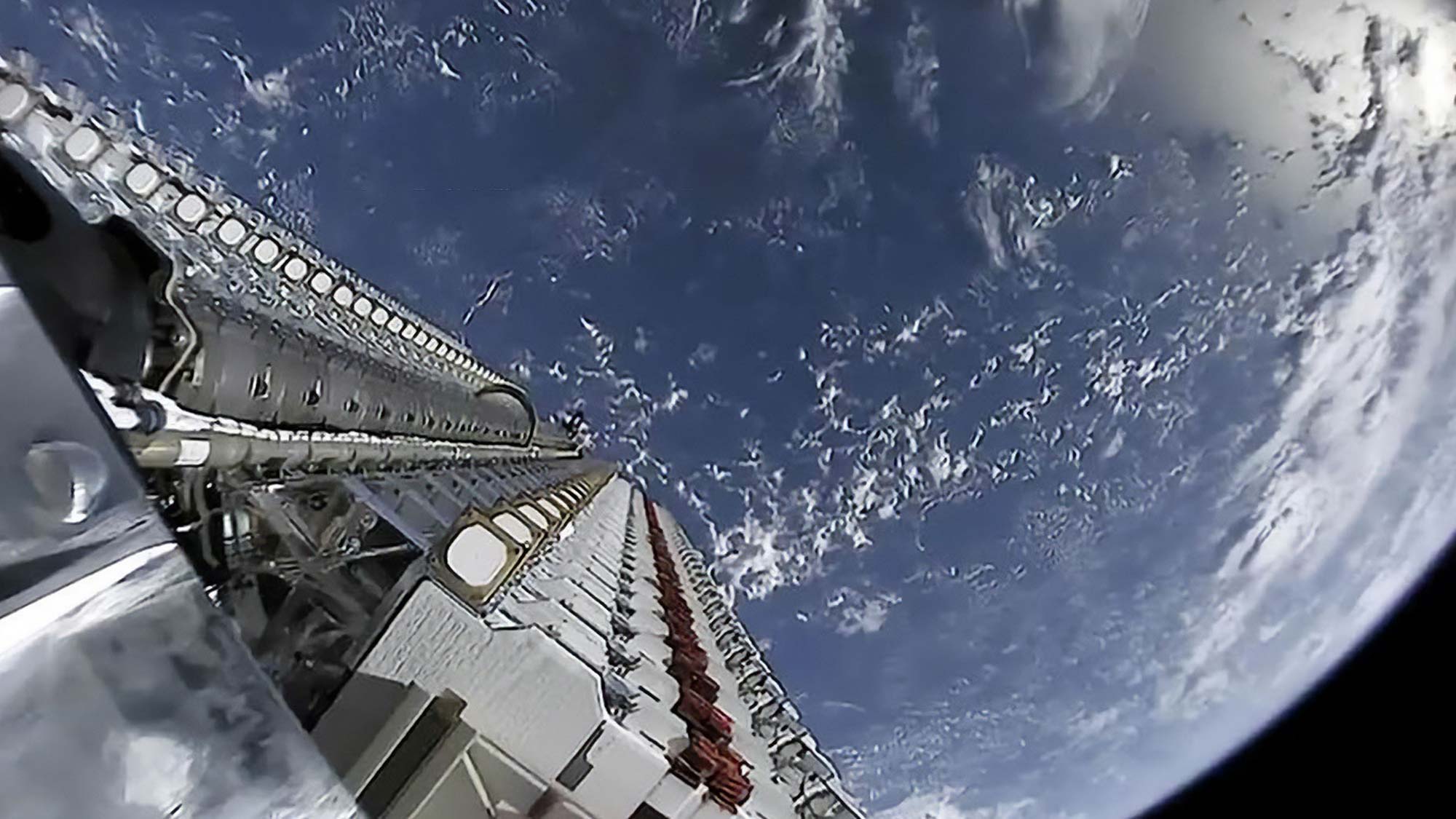
The Federal Communications Commission (FCC) is inching closer to giving SpaceX the ability to fly its Starlink satellites at an even lower orbit.
The report comes via Bloomberg, which states the acting FCC chair, Jessica Rosenworcel, is urging members of the commission to vote for the plan. If approved, it would move Starlink's 2,824 satellites currently in orbit to move from 1,000 kilometers above the Earth's surface down to 550. This would put Starlink's satellites just below Amazon's Project Kuiper satellite internet constellation, which it plans to have orbiting 630 kilometers above the Earth's surface. This even lower-Earth orbit (LEO) would allow Starlink to offer increased speed as signal would need to travel half as far.
- Starlink review
- These are the best Wi-Fi routers available right now
- Plus: Watching mobile YouTube videos just got more confusing — here's why
SpaceX had already gotten approval to allow 1,584 Starlink satellites to operate in the 540 to 570 kilometer range. If the FCC grants this additional approval, then 4,408 satellites could occupy this zone.
Of course, SpaceX and the FCC are getting push back from other satellite internet companies. Not only is Amazon's Project Kuiper competing against Starlink, so is Viasat Inc., Telesat Canada and OneWeb.
"It’s like a bomb going off," said John Janka, Viasat's chief officer for global regulatory and government affairs said in an interview before the FCC. "The satellites fragment, and then break into little pieces. And the debris spreads hundreds of miles."
It's not just the competition that's citing concern, so is the European Space Agency. It estimates that there are thousands of large pieces of space debris currently orbiting the Earth. The worry is that with thousands of competing satellite constellations, the chance for a collision increases. Those thousands of pieces of space debris could surge into the millions. Per NASA, current space debris has a total collective mass of 6,000 tons.
Outcry from astronomers has already prompted SpaceX to reduce the luminosity of its Starlink satellites. Still, according to an interview with John Barentine, director of public policy at the International Dark-Sky Association with the Washington Post, the satellites are still too bright, by "a factor of more than two.”
Get instant access to breaking news, the hottest reviews, great deals and helpful tips.
Apart from billionaires arguing about their satellites, this lower-Earth orbit Starlink constellation should mean increased speeds for customers.
- More: Starlink aiming for full launch this summer — what you need to know

Imad is currently Senior Google and Internet Culture reporter for CNET, but until recently was News Editor at Tom's Guide. Hailing from Texas, Imad started his journalism career in 2013 and has amassed bylines with the New York Times, the Washington Post, ESPN, Wired and Men's Health Magazine, among others. Outside of work, you can find him sitting blankly in front of a Word document trying desperately to write the first pages of a new book.
